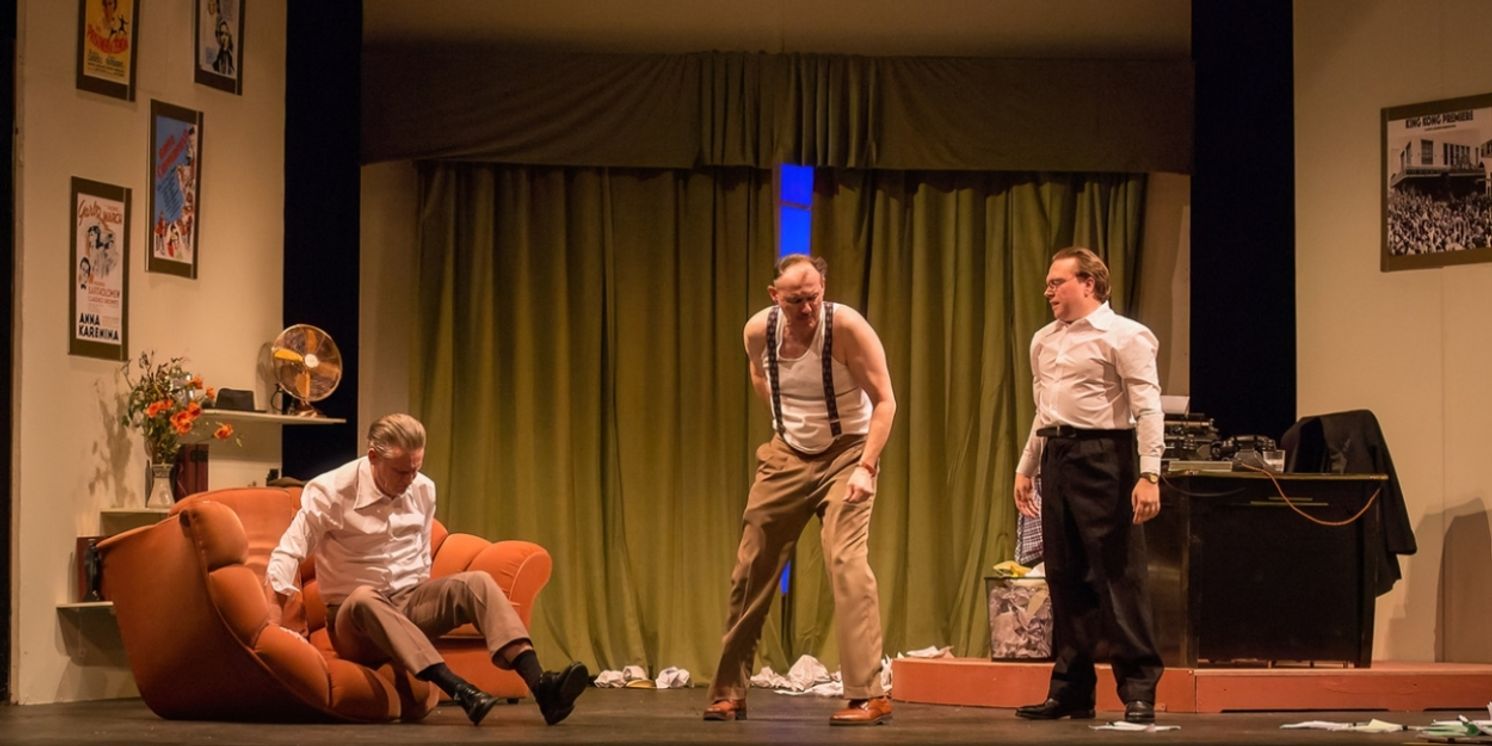Review: MOONLIGHT AND MAGNOLIAS at ARTS Theatre
The making of Gone with the Wind.

Reviewed by Ewart Shaw, Thursday 6th June 2024.
Art is a messy business and Ron Hutchinson’s Moonlight and Magnolias revels in the chaos of creation.
The title summons up an evocative, fragrant vision of the antebellum South. Elegant young men and women are out there on the verandah, sipping mint juleps and enjoying a southern barbecue. Out in the cotton fields, the workers are singing happy songs. There’s a civil war on the horizon.
It's 1939. Storm clouds are gathering over Europe. The rise of Hitler, the rise of Mussolini, and the rise of Stalin means Jews are fleeing for their lives. So many of Europe's great creative talents found their way to the United States of America, to Broadway, and to Hollywood, where they made such an important contribution to entertainment.
Meanwhile, David O Selznick is facing the collapse of his new project, a film adaptation of Gone with the Wind, by Margaret Mitchell. He is already over budget. He's burned Atlanta. He fired his director. The complete disaster of this project led to his bankruptcy and the loss of his reputation. It cost MGM millions, contributed to Vivien Leigh’s suicide, and is referred to by many film buffs as the greatest movie never made. That is, of course, not quite what happened. In this insightful and funny play, we see how Selznick managed to pull the project together. He brought in a new director, Victor Fleming, and he recruited one of the hardest-working screenwriters in the country, Ben Hecht. Caged in one room and fed, like chimpanzees, on peanuts and bananas, they pulled it off. What could have been the greatest disaster since the Hindenburg became a classic movie, that is still loved and enjoyed to this day. Hutchinson's very wordy play, directed by Harry Dewar, looks at the five days that saved the film.
The play focuses on the three men. There is a lot of talk as they argue, and bitch, and sulk. They workshop and explore various ideas, taking on different characters. They touch on the politics of race and violence, playing out the angles of Scarlett punishing the little slave girl. Where do you place the camera? Do we see the girl’s face? As the stage floor becomes increasingly littered with discarded pages the screenplay comes together.
Adam Gregory Schultz plays David O Selznick. It is an astonishing performance, mercurial, neurotic, articulate, and capable at one amazing moment of freezing on stage as if struck by a divine vision. Remembering your words and where to put your feet as an actor is a great challenge, but knowing when and how to stand still almost without breathing, that is special indeed. Terry Crowe plays the screenwriter, Ben Hecht, a seriously dishevelled individual. Scott Battersby is the film director, Victor Fleming, but Schultz, as Selznick, provides the driving energy to keep the play alive. Did I mention there's a lot of conversation? It is very, very wordy, but beautifully articulated in Hutchinson’s writing, after all, we’re talking talkies.
There are occasional interventions from Miss Poppenghul, a composite character representing all the secretaries and production assistants who fed these men during that handful of days. Rebecca Gardiner’s professional elegance declines through the action, a clever reflection of the chaos inside that room.
Harry Dewar is the best sort of director, the invisible sort. He works closely with his intelligent cast and finds much physical expression for their inner squabbles. There’s more than a touch of the Three Stooges in the face slapping, and a soupçon of Sartre’s Huis Clos.
The real Ben Hecht was a celebrated and prolific screenwriter, but he was a well-known journalist very, very active in trying to alert America to the threat posed by Hitler, not just to the Jews, but to Europe and America, and democracy itself. The simple set by Skye McVicar has a pair of armchairs, a desk, and there's a big old typewriter. There are two stylish doors. There's a window. Every now and again the curtains are pulled back to give you some idea of the passage of time.
I heartily recommend this production to anyone wanting an insight into the world behind the movie. Moonlight and Magnolias is educational, engaging, and entertaining. If you’ve seen the film you’ll get a lot from the play. If you’ve actually read the book you will have a real insight into how the story went from page to screen and back to stage. If you’ve not seen the film, why not? But see the play, it’s a great night in the Arts Theatre, and deserves bigger audiences than those who saw it on the opening night.
Reader Reviews
Videos

